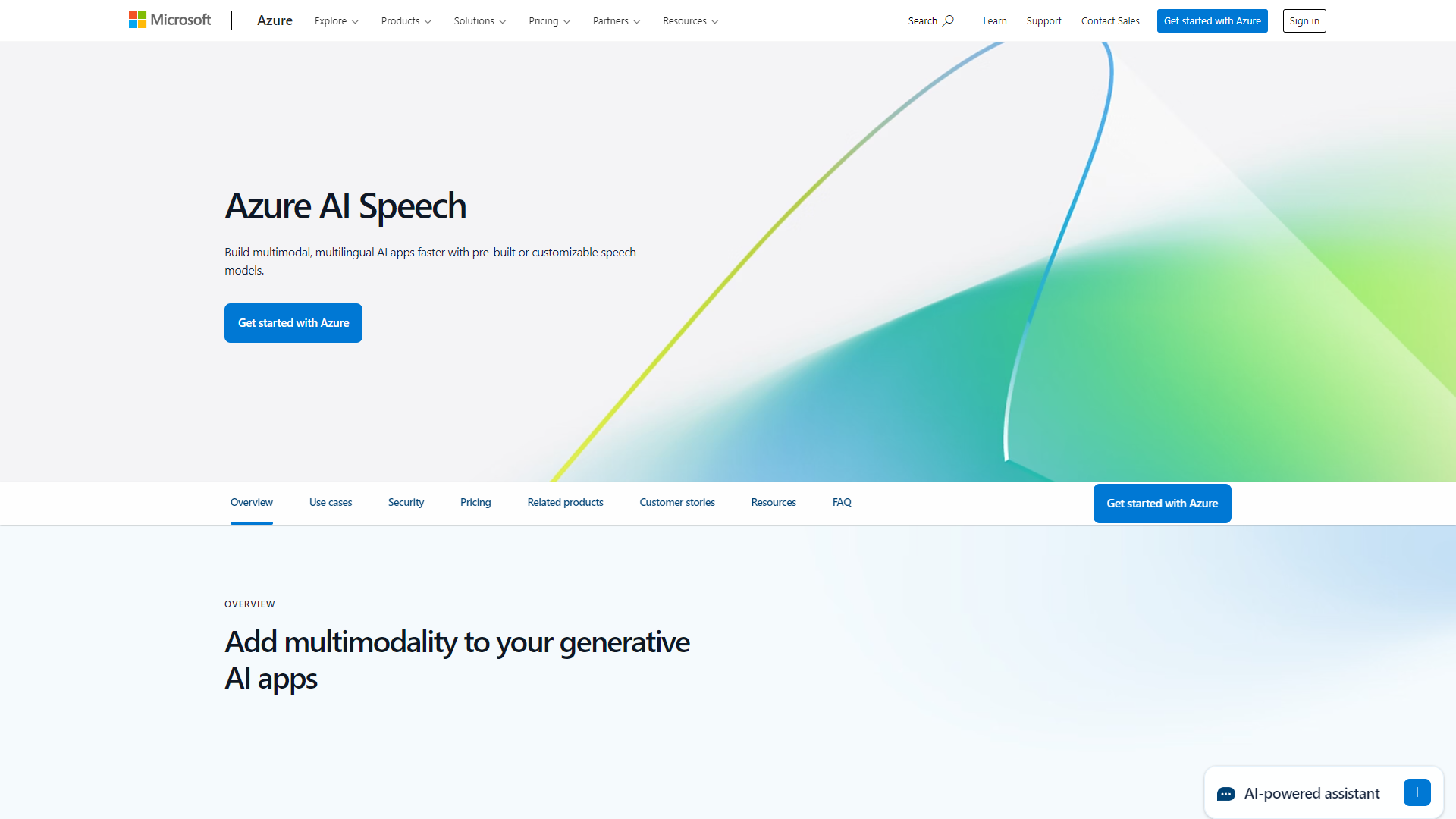
Azure Text to Speech API
Transform written text into natural-sounding speech.
🏷️ Price not available

- Overview
- Pricing
- Features
- Pros
- Cons
Overview
Azure Text to Speech API is a powerful tool that converts text into spoken words. It uses advanced machine learning algorithms to create lifelike speech, making it suitable for various applications. With high-quality voice options and easy integration, developers can enhance user experiences with minimal effort.
This API supports multiple languages and dialects, allowing businesses to reach a broader audience. Whether you want to create interactive voice responses, audiobooks, or accessibility features, this service delivers reliable results. Its scalability ensures that it can handle small projects as well as large-scale implementations, making it perfect for both startups and established companies.
Moreover, Azure Text to Speech API offers customizable voice options and the ability to fine-tune pronunciation. The intuitive support documentation helps developers implement this feature quickly. Overall, it’s an essential tool for anyone looking to turn their text content into engaging audio.
Pricing
| Plan | Price | Description |
|---|---|---|
| Small-Business | N/A | 13% less expensive than the avg. Text to Speech product https://www.g2.com/products/azure-text-to-speech-api/reviews?filters%5Bcompany_segment%5D%5B%5D=179 |
| Enterprise | N/A | 26% more expensive than the avg. Text to Speech product https://www.g2.com/products/azure-text-to-speech-api/reviews?filters%5Bcompany_segment%5D%5B%5D=181 |
Key Features
🎯 Multiple Voice Options: Choose from a variety of voices to suit different applications and user preferences.
🎯 Language Support: Offers support for numerous languages and dialects to cater to a global audience.
🎯 Customization: Users can adjust pitch, speed, and volume to create a unique sound for their needs.
🎯 Realistic Speech: Leverages neural network technology to produce natural-sounding speech.
🎯 SSML Support: Allows the use of Speech Synthesis Markup Language for enhanced control over pronunciation.
🎯 Easy Integration: Simple APIs make it easy to integrate text-to-speech functionality into existing applications.
🎯 Scalable Solutions: Works well for both small projects and large enterprise solutions, ensuring seamless scalability.
🎯 Accessibility Features: Helps make content more accessible for users with disabilities or visual impairments.
Pros
✔️ High Quality: Produces very realistic and natural-sounding speech.
✔️ Wide Language Range: Supports a broad range of languages, making it globally usable.
✔️ Easy to Use: The API is straightforward and developer-friendly, reducing implementation time.
✔️ Customizable Voices: Users have the ability to fine-tune voice characteristics for specific needs.
✔️ Scalable: Suitable for various project sizes, ensuring it grows with your needs.
Cons
❌ Cost: Depending on usage, the costs can accumulate and may be high for heavy users.
❌ Internet Dependency: Requires a stable internet connection to function, limiting offline use.
❌ Limited Free Tier: The free tier may not be enough for extensive testing or larger projects.
❌ Learning Curve: Some developers might find the initial setup and customization challenging.
❌ Fine Tuning: Achieving the desired voice output may require some trial and error.
Manage projects with Workfeed
Workfeed is the project management platform that helps small teams move faster and make more progress than they ever thought possible.
Get Started - It's FREE* No credit card required
Frequently Asked Questions
Here are some frequently asked questions about Azure Text to Speech API. If you have any other questions, feel free to contact us.